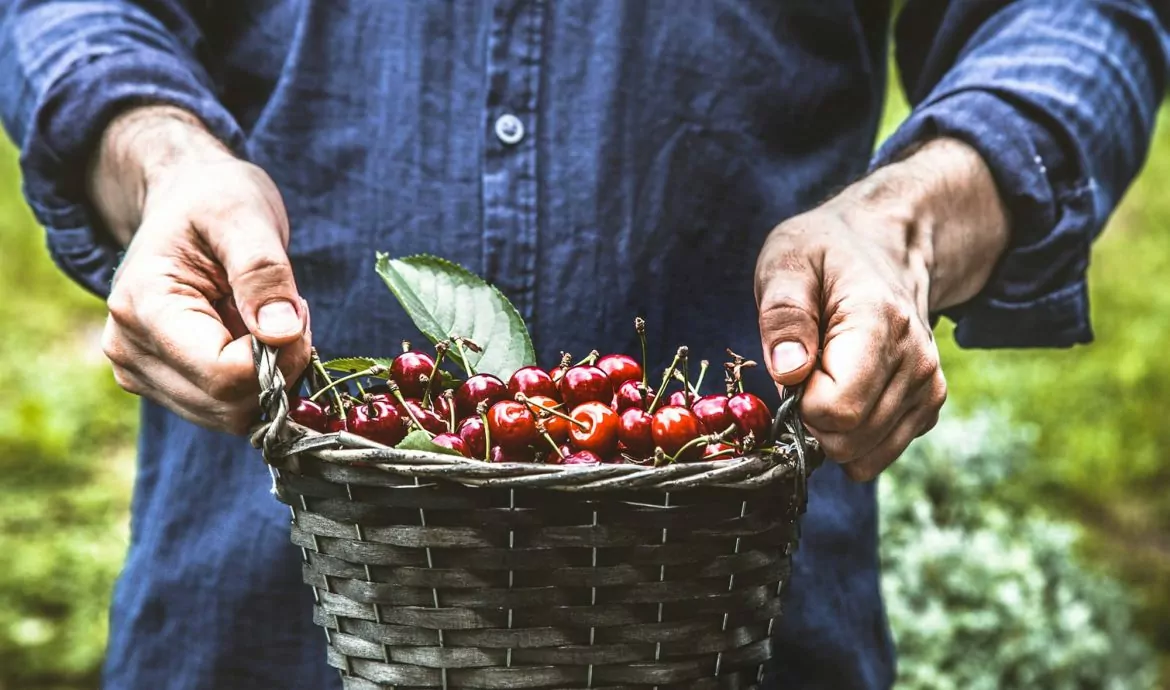We usually think the fruit harvest happens when the fruit is ripe. However, there are many things to factor in when deciding on the best time to pick fruit. The season, for example, is not decisive, because the weather conditions in the preceding seasons might change from one year to the next.
The type of fruit also plays an important role in harvesting. Some fruits need to ripen completely on the tree, like cherries, because once they’re picked, they won’t continue to ripen. Others are better harvested before they reach maturity, like pears, because if they ripen on the tree, they will spoil two days after harvesting.
But before going any further into the fruit harvest, let’s distinguish the three stages in the life span of fruit.
Life span stages
- Maturation: The fruit is ready for harvesting and fully grown, but it might not be edible.
- Ripening: It follows or overlaps maturation. The colors of fruit are bright and the flesh is sweet, hence edible.
- Senescence: The fruit loses flavor and texture. It is a natural degradation process.
Using the senses, such as taste and touch, is the best way to determine maturation, ripeness or senescence. In large crops, though, there is AI technology to monitor environmental elements, among other things, which will help to decide when it’s time for the fruit harvest.
Storage
Once fruits have been harvested, they need to be consumed quickly or properly stored for other applications such as puree, pulp, or juices. Fruits like berries are better preserved when frozen and they can be easily used in jams, desserts, or smoothies.
On the other hand, soft fruits like plums and nectarines don’t preserve well in the freezer and have a short shelf life after harvesting. They should be eaten right after they ripen, while pears can be kept in a bowl for two weeks, where they will continue to ripen.
Fruit preservation is crucial in the fruit harvest because if the produce is harvested correctly, but poorly preserved, losses are high. (See also: Fruit Puree). Moreover, storage is also a determining component in food certifications. Some will require aseptic packaging or natural preservatives to name a few.

Seasonal fruit harvest
Even though there is a variety of fruits available year-round, thanks to global distribution, it’s always best to enjoy them when it is peak season. That guarantees the best quality in the market. Harvest seasons, however, will vary by region and climate conditions. In warmer areas, harvest season starts earlier and lasts longer and in colder zones it starts later and ends sooner (The Spruce Eats, 2019).
Spring
- Cherries
- Grapefruit
- Kiwis
- Strawberries
Summer
- Blackberries
- Blueberries
- Mangos
- Peaches
- Plums
- Watermelons
Fall
- Cranberries
- Apples
- Pears
- Quinces
Winter
- Clementines
- Mandarins
- Pomelos
- Tangerines
Fruit harvest methods
Hand harvesting
Fruits are harvested only by hand, with no tools. Harvesters use a picking cart or a container to collect the produce. Strawberries, for example, are commonly hand harvest to avoid bruising, like many other exotic berries.
Tool harvesting
This method is typically used in trees when fruits are not easily harvested by hand. Depending on the type of fruit, a clipper is used to remove the fruit from the tree. Clementine mandarins (cuties), figs, and peaches are picked using this technique.
Harvesting with machinery
There is different machinery to harvest crops and the selection depends on the type of produce and the postharvest activities. Harvesting rigs, mowing machines, and combines are the most common harvesting equipment.
Every step, from growing the seed, to fruit harvest, storage, and transportation, needs to be carefully monitored to deliver high-quality goods. Food engineering has a big part in it, but the early stages are significant to the finished product.
References
CRIVELLI, M. (SEPTEMBER 24, 2019). HARVESTING METHODS OF FRUITS & VEGETABLES. THE PRODUCE NERD.
RETRIEVED FROM HERE
FAO AGRICULTURAL SERVICES BULLETIN. (2003). CHAPTER 2. BASIC HARVEST AND POST-HARVEST HANDLING CONSIDERATIONS FOR FRESH FRUITS AND VEGETABLES. FOOD AND AGRICULTURE ORGANIZATION OF THE UNITED NATIONS.
RETRIEVED FROM HERE
MAX. (DECEMBER 18, 2020). FRUIT HARVEST GUIDE – OUR BEST TIPS. TREES.COM.
RETRIEVED FROM HERE
WATSON, M. (SEPTEMBER 28, 2019). YOUR GUIDE TO SEASONAL FRUITS AND VEGETABLES. THE SPRUCE EATS.
RETRIEVED FROM HERE





















